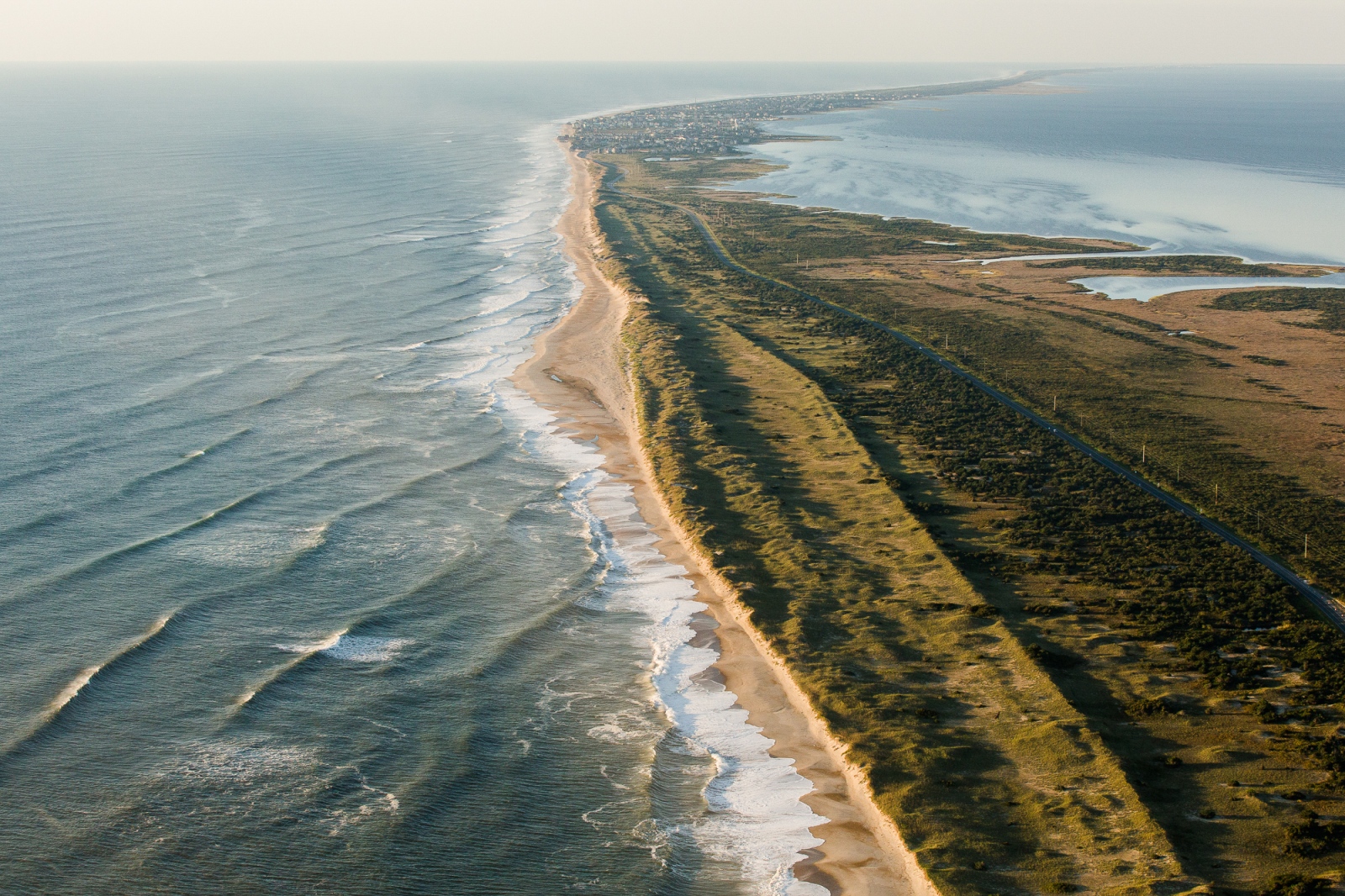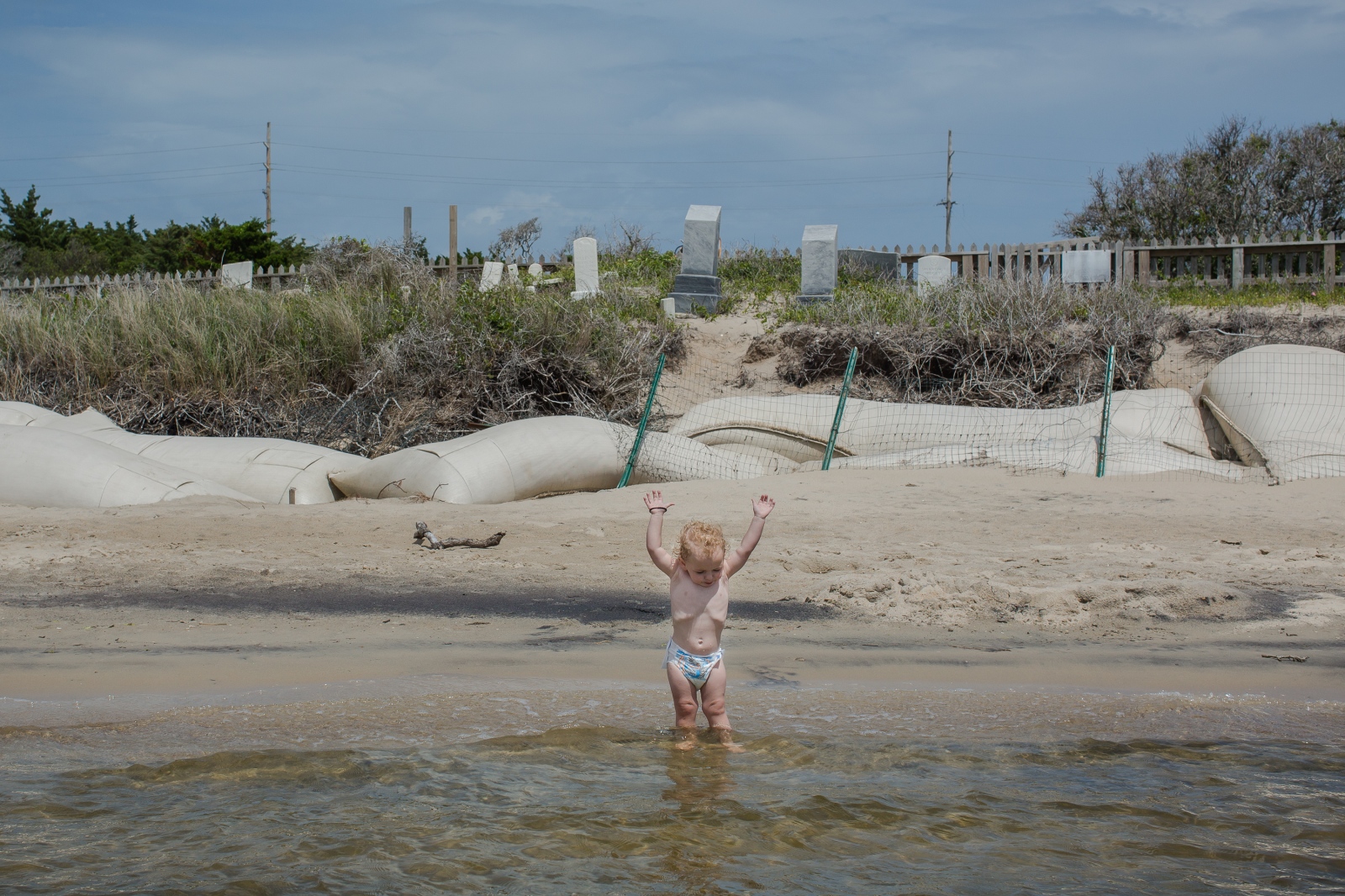The Outer Banks are a chain of thin, ever-shifting barrier islands built and nourished by hurricanes, and are meant to migrate west toward North Carolina's mainland. But this process is prevented by overdevelopment and the highway that threads the island villages which supports Dare County’s billion-dollar-a-year tourism industry. Today, more frequent and intense storms fueled by climate change are eroding the Outer Banks, and, by 2100, six feet of global sea level rise threatens to inundate them completely.
Locals are already watching their ancestors and memory slip into the sea. Halfway down Hatteras lies the Salvo Day Use Area, a campground tucked between the edge of the Pamlico Sound and a parking lot. It's a place teeming with tourists and estuarine life, and a final resting place for descendants of some of the first European settlers to America. But when the storms blow and the water surges, the sound floods the cemetery, which is disappearing grave by grave.
A group of cemetery descendants are racing to build a bulkhead to keep their ancestors from washing away. My late grandfather grew up on the Outer Banks, and they discovered that we share a distant ancestor who was once buried at the cemetery, but a storm sucked her into the sound years ago. They introduced me to an elderly woman who grew up on the island, and never lived any where else. The cemetery is sacred ground to her, and she still wants to be buried there next to her grandparents even if the sea eventually takes her bones.
The work tells a story about the slow creep of climate change in the lives of ordinary people who are left to save their homes, land, and memory from the sea, and determine their own path for climate-resiliency on this restless sliver of sand.
























